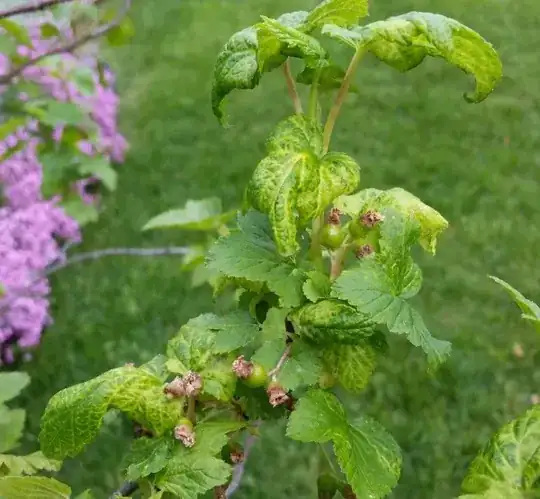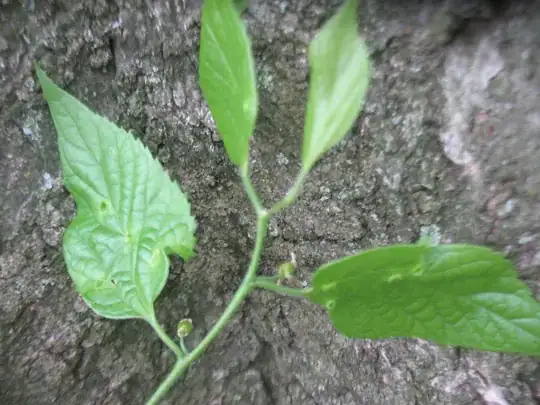Decomposed organic matter should never be used as 'fertilizer'. When undecomposed the decomposers use up the nitrogen to do their job. What is left? All sources are different in chemical (nutrient) makeup. That is the thing; none of these manures are balanced. The decomposition itself uses most of the Nitrogen just to decompose. Decomposed organic matter is invaluable as a way to 'feed' the soil or rather the macro and micro soil organisms outside of the decomposers. The only way to improve soil is to add decomposed organic matter, to the top of the soil allowing the soil organisms who have to have only decomposed organic matter for food/energy to come up, eat, go back into the soil and poop it out mixing organic matter into the soil for you without any mechanization. I've been out on a sheep manure and gardening site explaining that sheep manure has to be decomposed as well. 'Hot' means not decomposed. Has more nitrogen than after decomposition and most certainly can affect your plants primarily because it is way out of balance. Too much Nitrogen in relation to the P and K will enhance fast growth, weak growth making a plant susceptible to disease. That manure will be broken down by decomposers who in the process use lots of nitrogen. Sucks any nitrogen out of your soil that it might have had as well as the nitrogen the manure began with. Until that stuff is fully decomposed all the other soil organisms go to sleep, dormancy or die. When there is decomposed organic matter available the soil organisms not responsible for decomposing finally wake up, reproduce, eating this stuff for energy. That is called a 'live' soil. Putting bark (not decomposed) or sheep manure (not decomposed) on your soil causes your soil organisms to go dormant until the decomposers have done their job, using up the Nitrogen to do their job.
Whether 'organic' or 'synthetic' the chemicals are identical. No matter their source, a Phosphorous atom is always a phosphorous atom. No differentiation between an 'organic' atom or a 'non organic' atom.
You have to give your plants balanced fertilizer. You have to take into account the 'standard' chemistry of decomposed sheep manure. Haven't been able to find that one yet. Look for an even number of NPK for a balanced fertilizer from a bag. Or if you want to get into this more, find a formulation higher N in proportion to P and K after the fruiting. Before that only fertilize with LOW N in proportion to P and K. That promotes reproductive growth.
If plants are not getting the chemistry they need with which to do photosynthesis, they will be weakened, vulnerable to disease. Which brings me back to the symptoms of your currant. I see a number of problems which I believe are the result of lack of chemicals (nutrients) your plant has to have to be healthy and resistant to diseases, insects.
Are you a smoker? Have you had any friends over that are smokers and have blown tobacco smoke on this plant or handled/touched this plant with tobacco on their fingers? Tobacco has a gnarly virus which is contraindicated for an awful lot of plants. This shrub looks like it has Mosaic Virus. One of the reasons is because there are leaves that look just fine and dandy. Newer leaves will be allotted chemistry if that chemistry is lacking first. Your plants show this yellowing on the newest leaves. I am thinking that these are the most vulnerable leaves to tobacco smoke and therefore are showing the symptoms of Mosaic Virus. mosaic virus on ribes. Check out the dead fruits.
Part of the reason is unbalanced fertilizer but the other would be tobacco smoke. If no smoker has touched or smoked around this plant, we need to continue this investigation! Grins. Let me know. Hold off on doing anything as yet, okay?
Well, if there are truly spider mite on this plant (fine fine webbing in the angles of branches and leaves) or get a cheapo specimen microscope ($10 - $14 on line, Amazon) and look at the leaf undersides. You should easily see them at 40X. My cheapo microscope goes up to 120X! Always important to see your insect before making battle plans. If there is a spider mite problem, Neem, is the best to use. Please never spray NEEM during the day, only at night. Some formulations say 'okay for bees' but I don't believe them. Spray only at night. Get the undersides of the leaves, too! Take a picture if possible of the webbing at least to send.

